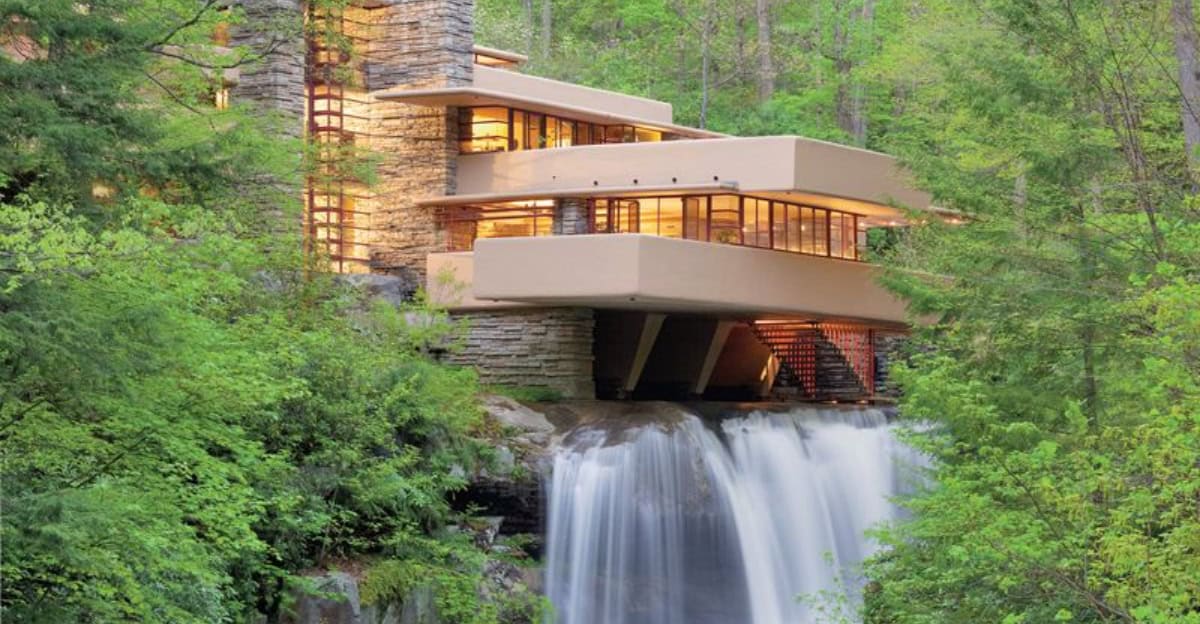Modernist architecture is a celebration of innovation, simplicity, and functionality. It emerged in the early 20th century as a response to the ornate designs of previous eras.
This blog post highlights 10 of the most stunning examples of modernist architecture from around the globe.
These buildings are not just structures; they are works of art that inspire creativity and awe.
1. Fallingwater, Pennsylvania
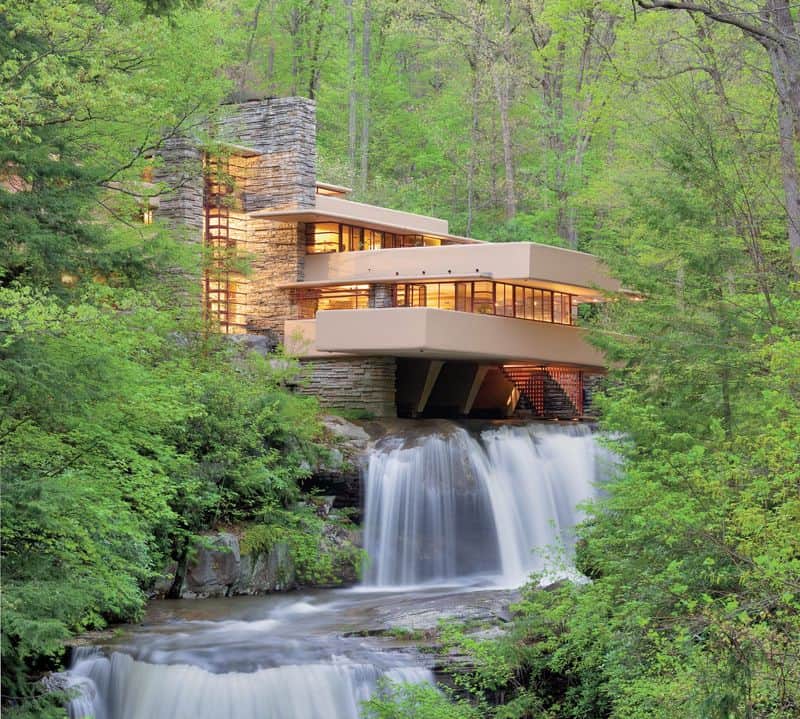
Fallingwater, designed by Frank Lloyd Wright, stands as a masterpiece of modernist architecture.
Nestled in the lush woods of Pennsylvania, it seamlessly integrates with its natural surroundings. Each room offers breathtaking views of the flowing waterfall beneath.
The structure’s cantilevered terraces project over the water, creating a harmony between human habitation and nature.
This design blurs the boundary between the indoors and outdoors, a hallmark of modernist principles.
Fallingwater remains a pilgrimage site for architecture enthusiasts and continues to influence contemporary architectural trends around the world.
2. Villa Savoye, France
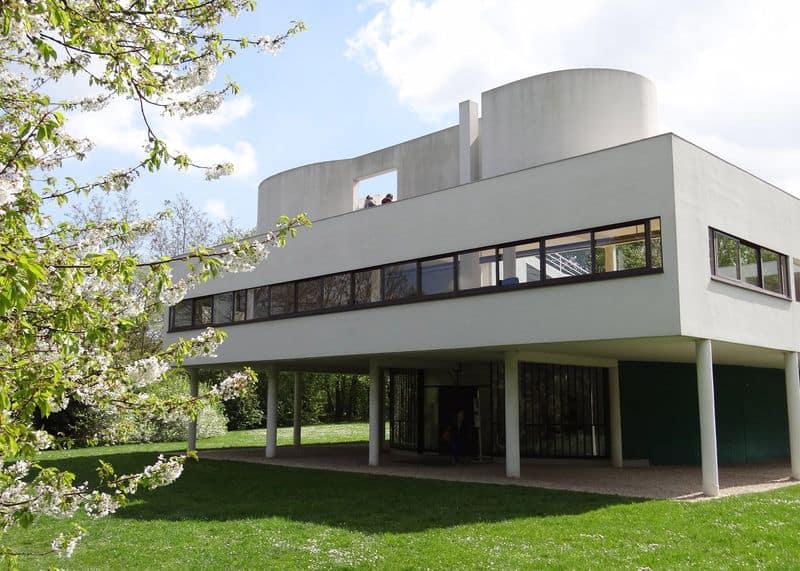
Villa Savoye, located just outside Paris, epitomizes modernist elegance. Designed by Le Corbusier, this residence is celebrated for its clean lines and functional design.
The building rests on pilotis, elevating it above the ground and providing a sense of lightness.
Inside, open floor plans and ribbon windows allow natural light to flood the space. Its white facade and minimalist aesthetic are iconic of the modernist movement.
Villa Savoye remains an inspiration for architects seeking simplicity and balance in their designs, bridging the gap between form and function.
3. The Guggenheim Museum, New York
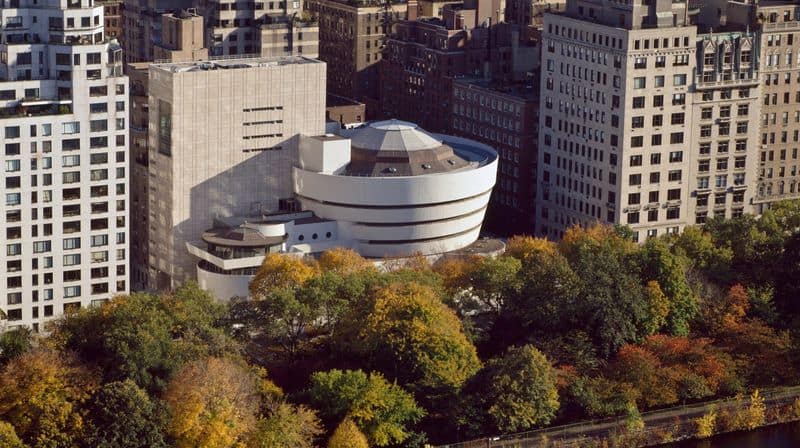
Frank Lloyd Wright’s Guggenheim Museum in New York is a testament to innovative design.
Its spiral form revolutionized museum architecture, creating a dynamic viewing experience. Visitors ascend a gentle slope while engaging with the art.
The structure’s organic curves and smooth surfaces are defining features of modernist architecture. Skylights and open spaces enhance the interplay of art and natural light.
The Guggenheim remains a cultural landmark, inviting millions to explore its unique design and diverse exhibits.
Its influence on modern architecture is profound, encouraging bold, unconventional designs.
4. Sydney Opera House, Australia
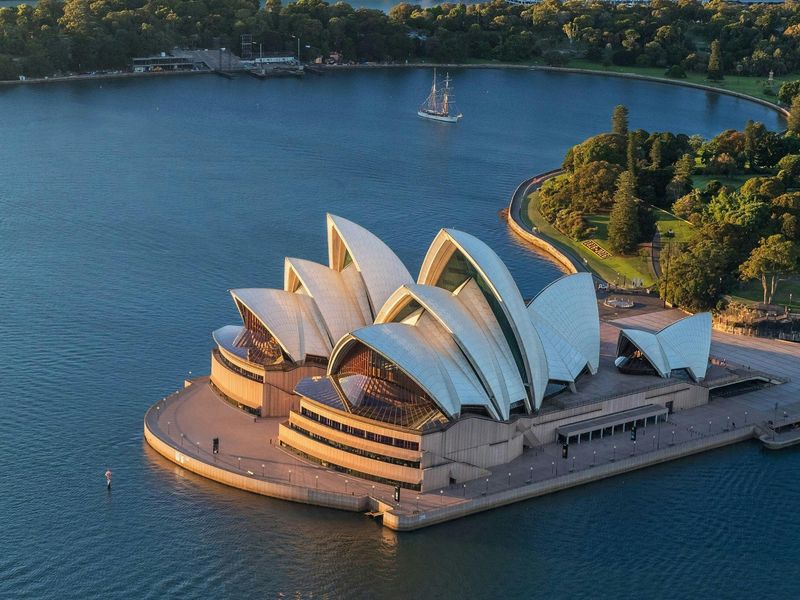
The Sydney Opera House, designed by Jørn Utzon, is an emblem of modernist architecture. Its sail-like shells rest on the waterfront, creating an iconic silhouette against the skyline.
This masterpiece combines form and function, housing multiple performance venues within its complex structure. The use of precast concrete panels demonstrates modernist innovation in engineering.
More than just an opera house, it is a symbol of Australia’s cultural identity.
The building’s design is celebrated worldwide for its creative use of space and form, making it a must-see for architecture lovers.
5. Barcelona Pavilion, Spain
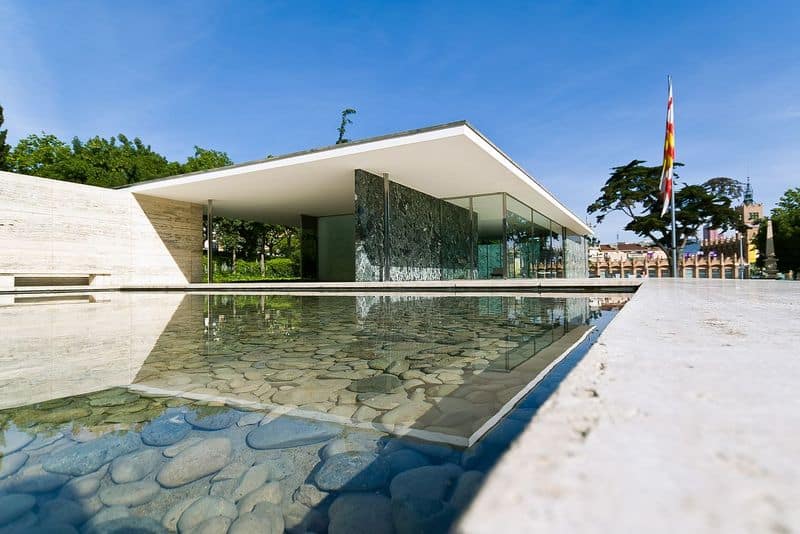
The Barcelona Pavilion, created by Ludwig Mies van der Rohe, is a paragon of minimalist design. Located in Spain, it was originally built for the 1929 International Exposition.
This structure is renowned for its simplicity and open floor plan, utilizing luxurious materials like marble and onyx.
Its reflective surfaces create a play of light and shadow, enhancing the pavilion’s serene atmosphere.
Mies van der Rohe’s ‘less is more’ philosophy is evident in every aspect of the pavilion. It continues to inspire architects with its timeless elegance and clarity of form.
6. Niterói Contemporary Art Museum, Brazil
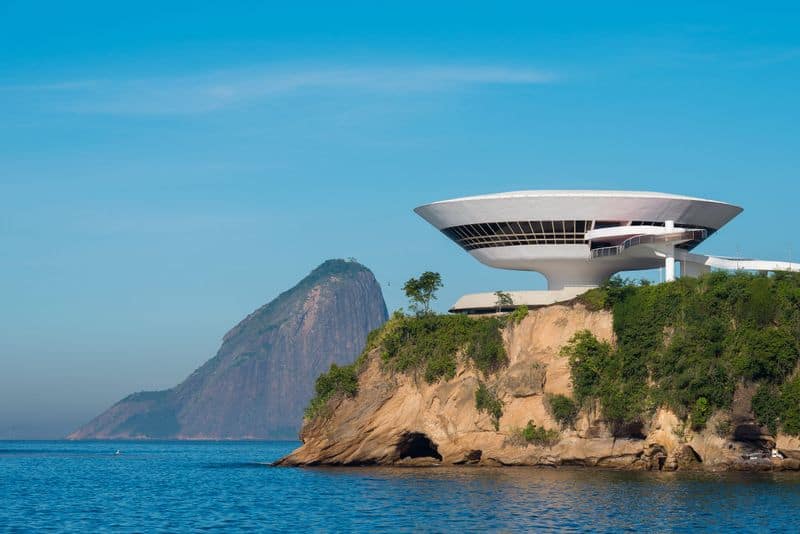
Oscar Niemeyer’s Niterói Contemporary Art Museum in Brazil resembles a spaceship perched on a cliff.
Its futuristic design is a marvel of modernist architecture, showcasing Niemeyer’s visionary approach.
The museum’s circular form offers panoramic views of the surrounding landscape and ocean. Inside, its winding ramp provides a seamless flow for visitors.
This building exemplifies the innovative spirit of modernism, blending aesthetics with functionality.
The Niterói Museum stands as a beacon of creativity, attracting architecture admirers and art enthusiasts from all over.
7. Seagram Building, New York
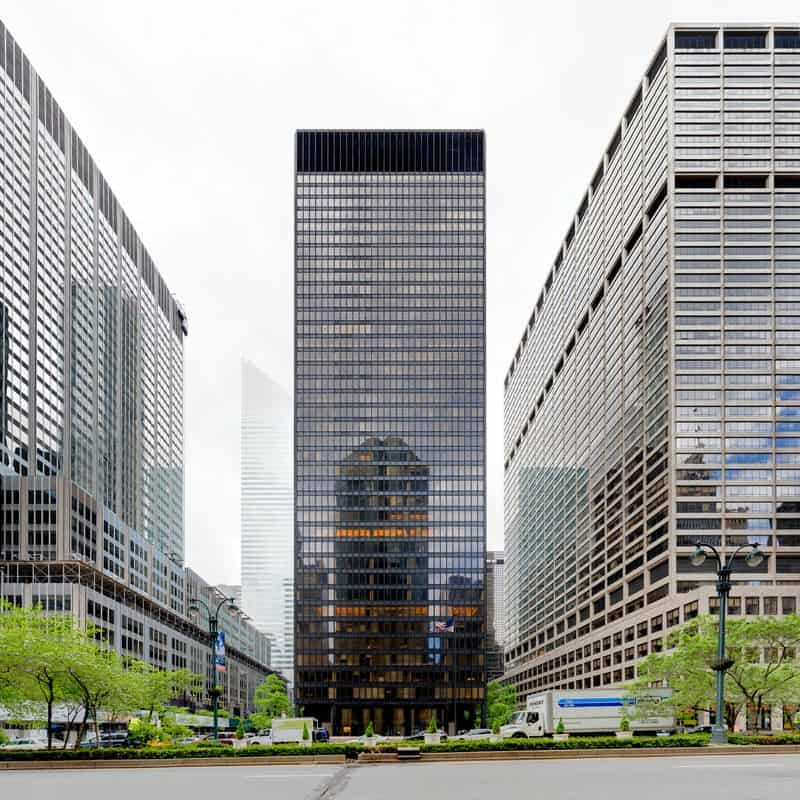
The Seagram Building, crafted by Ludwig Mies van der Rohe, is a landmark in New York City’s skyline. Its sleek design and glass facade are iconic of modernist principles.
This skyscraper’s steel frame allows for open, flexible floor plans, revolutionizing office design. Its use of bronze-tinted glass and deliberate simplicity set new standards for corporate architecture.
Regarded as a masterpiece, the Seagram Building has influenced generations of architects.
Its commitment to form and function embodies the ethos of modernism, making it a pivotal building in architectural history.
8. Casa Milà, Spain
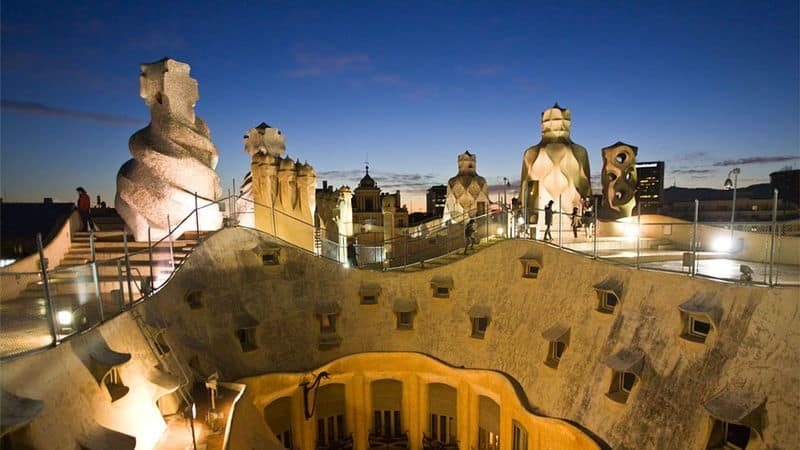
Antoni Gaudí’s Casa Milà, also known as La Pedrera, is located in the heart of Barcelona.
Its undulating stone facade and wrought iron balconies reflect Gaudí’s organic approach to modernism.
The building’s freeform structure and rooftop terraces exemplify a departure from traditional architectural norms. Inside, the use of natural light and ventilation creates harmonious spaces.
Casa Milà continues to captivate visitors with its imaginative design and creative use of materials. It remains a testament to Gaudí’s genius and the limitless possibilities of modernist architecture.
9. Eames House, California
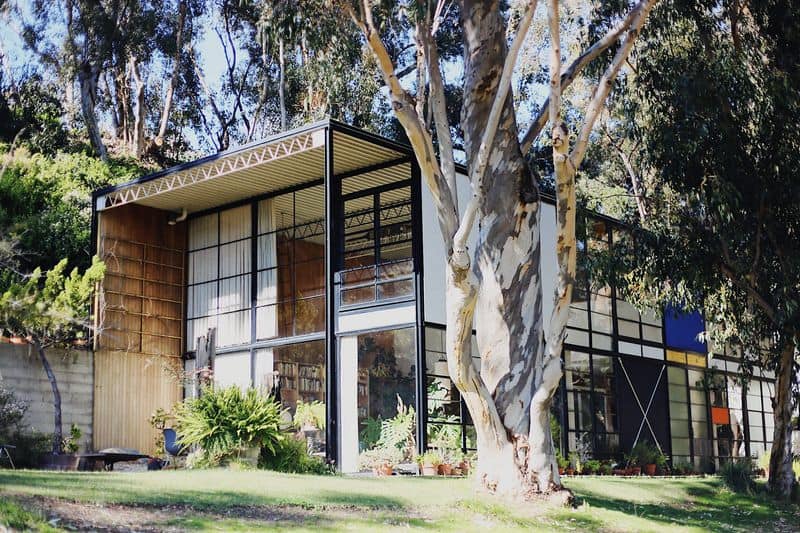
The Eames House, designed by Charles and Ray Eames, is a model of modernist residential architecture.
Nestled in the California hillside, it merges with its natural surroundings.
This house employs a modular design, using glass and steel to create open, light-filled spaces. The Eames’ philosophy of functional beauty is evident throughout the structure.
As a preserved historic site, the Eames House continues to influence modern home design. Its emphasis on simplicity and integration with nature resonates with architects worldwide.
10. TWA Flight Center, New York

Eero Saarinen’s TWA Flight Center at JFK Airport is a celebration of aviation and modernist design. Its wing-like roof captures the essence of flight, creating a dynamic and futuristic facade.
Inside, passengers experience flowing curves and open spaces, enhancing the travel experience. The building’s innovative design reflects the optimism of the Jet Age.
As a preserved landmark, the TWA Flight Center continues to awe visitors with its visionary architecture.
It remains an enduring symbol of modernism’s influence on public and commercial spaces.

